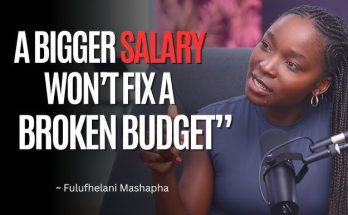In a world characterized by inherent uncertainties, where unexpected events can swiftly disrupt even the most meticulously crafted financial plans, insurance stands as a fundamental bulwark of protection. Far from being an optional luxury, appropriate insurance coverage is an indispensable component of sound financial planning for individuals and families, serving as a critical risk management tool akin to those employed by astute businesses. Just as a corporation safeguards its assets and operations against unforeseen calamities, individuals must proactively shield their health, property, income, and loved ones from the financial repercussions of life’s inevitable curveballs. Understanding the most common types of insurance is the first step toward building a resilient financial future.
Perhaps the most universally acknowledged and crucial form of protection is health insurance. The cost of medical care, even for routine visits, can be staggering, and a serious illness or accident can quickly lead to financial ruin for those without adequate coverage. Health insurance provides a mechanism to mitigate these substantial financial risks, covering doctor visits, prescription medications, hospital stays, and emergency services. Choosing the right health insurance plan involves balancing premiums, deductibles, co-pays, and out-of-pocket maximums with your anticipated medical needs and financial capacity. For an individual or a family, a robust health insurance policy is not just about physical well-being; it’s about preserving financial stability in the face of unpredictable health challenges. It’s the ultimate business continuity plan for your personal health.
Following closely in importance is auto insurance, a legal requirement in most places and a practical necessity everywhere else. Given the inherent risks associated with operating a vehicle, auto insurance protects you from financial liability in the event of an accident. This coverage typically includes bodily injury liability, which pays for injuries to others, and property damage liability, which covers damage to other vehicles or property. Beyond liability, collision coverage protects your own vehicle if you are at fault in an accident, while comprehensive coverage addresses damage from non-collision events like theft, vandalism, or natural disasters. Uninsured/underinsured motorist coverage is also vital, protecting you if you are hit by a driver without sufficient insurance. For anyone who drives, auto insurance is a non-negotiable safeguard against potentially ruinous legal and repair costs, much like a trucking company insuring its fleet against road hazards.
For homeowners, homeowners insurance offers essential protection for what is often their largest asset. This policy typically covers damage to your home’s structure and your personal belongings inside due to perils like fire, theft, windstorms, and other specified events. Crucially, it also includes liability coverage, protecting you financially if someone is injured on your property. Renters, while not needing homeowners insurance for the structure, should seriously consider renters insurance. This affordable policy protects your personal belongings from theft or damage and provides crucial liability coverage, which is often overlooked but incredibly important if someone is injured in your rented space. In essence, both homeowners and renters insurance serve as the financial fortress around your most valuable possessions and potential liabilities within your living space.
Moving beyond immediate property, life insurance emerges as a profound act of financial responsibility and foresight. Its primary purpose is to provide a financial safety net for your loved ones should you pass away prematurely. The payout from a life insurance policy can replace lost income, cover outstanding debts (like a mortgage), fund children’s education, or simply provide financial stability during a period of grief and adjustment. There are generally two main types: term life insurance, which provides coverage for a specific period (e.g., 20 or 30 years) and is often more affordable, and whole life insurance, which provides lifelong coverage and typically includes a cash value component. Deciding on the appropriate type and amount of life insurance requires careful consideration of your family’s financial needs and future obligations, ensuring that your legacy is one of security, not burden. It’s the ultimate succession planning for your family’s financial well-being.
Finally, though often overlooked, disability insurance is a vital form of income protection. Your ability to earn an income is arguably your most valuable asset. What would happen if an illness or injury prevented you from working for an extended period? Disability insurance replaces a portion of your lost income during such an event, ensuring that you can continue to meet your financial obligations even when you cannot perform your job. This can be short-term disability, covering periods of a few weeks to a few months, or long-term disability, which provides benefits for years or even decades. Relying solely on emergency savings for a prolonged period of disability is often insufficient, making this coverage a critical component of a comprehensive financial protection plan. It’s akin to a business having business interruption insurance to safeguard its revenue stream during unexpected operational halts.
In conclusion, understanding and acquiring the right types of insurance is not an expense but an investment in peace of mind and financial resilience. It’s a proactive strategy to mitigate unavoidable risks, transforming potentially catastrophic financial events into manageable setbacks. By thoughtfully assessing your needs for health, auto, home/renters, life, and disability insurance, and by regularly reviewing your coverage as life circumstances evolve, you build a robust protective shield around your financial future. This strategic approach to risk management empowers you to navigate life’s uncertainties with greater confidence, much like a well-prepared enterprise facing dynamic market conditions.



